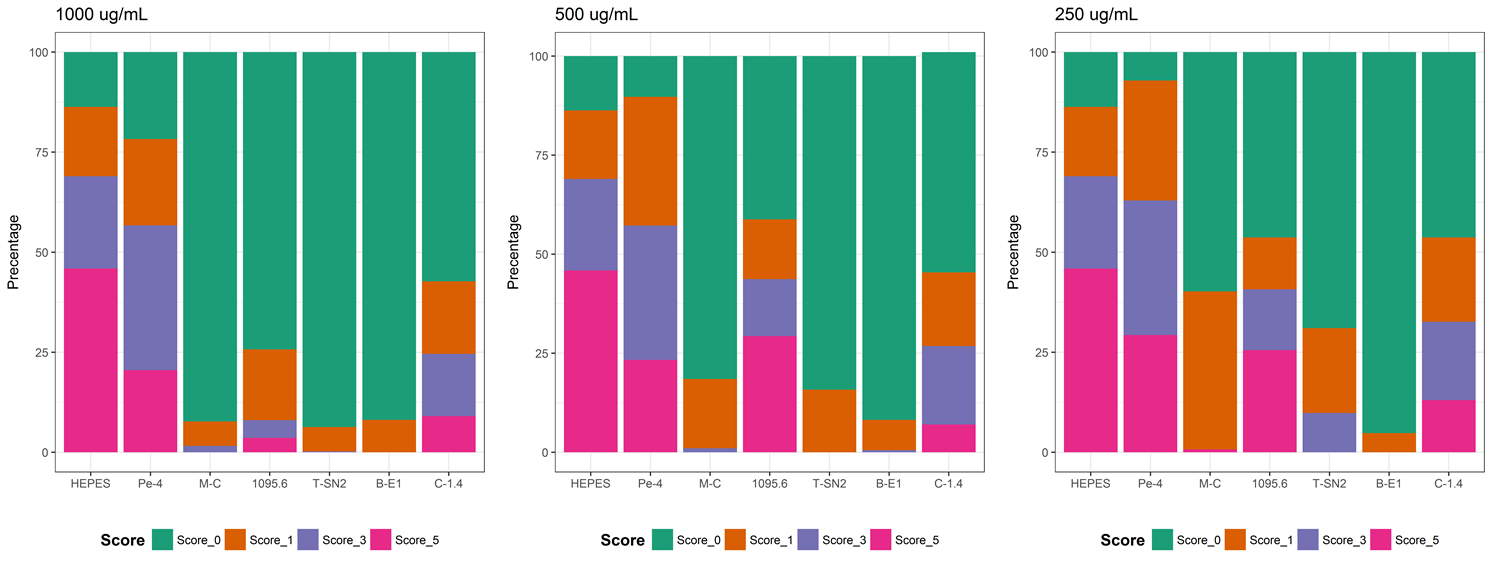Part:BBa_K2262021
T7 Promoter+RBS+T-SN2
Introduction
T-SN2 is an antimicrobial peptide [1]. The score of SCM analysis shows its promising potential to be antifungal.
Scoring Card Predict
T-SN2 got 438.5 from the Antifungal Scoring Card of Parabase System. The score is over 353, the threshold to divide whether a peptide has an antifungal function probability, that means T-SN2 has a high probability to have an antifungal function.
Experiment
1. Inhibition Zone
The result shows that the place we put T-SN2 will have a hole. It means the peptide will affect the growth of mycelium.
2. Spore Germination
The result shows that the spore germination percentage of non-germinating spores adding T-SN2 with a concentration of 1000 μg/mL was higher than adding the negative control, which means the spore germination is inhibited by peptides and proves the peptides are effective. We can get the same result from adding T-SN2 with a concentration of 500 μg/mL and 250 μg/mL .
3. Botany Experiment
In order to test our anti-fungal peptides, we put T-SN2 and negative control, double-distilled water, on the flower. The negative control is on the left and T-SN2 is on the right. Both sides are infected with Botrytis cinerea. We checked the flower 3 days later whether the flower was affected or not. The result shows that the right side, which was spread on T-SN2 is not infected. It means T-SN2 has an anti-fungal function in real plant organism.
Reference
[1] Xiaolong Yang; Yuhong Hu; Shiqi Xu; Yonghong Hu; Hao Meng; Chao Guo; Yuliang Liu; Jingze Liu; Zhijun Yu; Hui Wang. “Identification of multiple antimicrobial peptides from the skin of fine-spined frog, Hylarana spinulosa (Ranidae)” Biochimie Volume 95, Issue 12, December 2013, Pages 2429-2436
Sequence and Features
- 10COMPATIBLE WITH RFC[10]
- 12COMPATIBLE WITH RFC[12]
- 21COMPATIBLE WITH RFC[21]
- 23COMPATIBLE WITH RFC[23]
- 25COMPATIBLE WITH RFC[25]
- 1000COMPATIBLE WITH RFC[1000]
| None |





